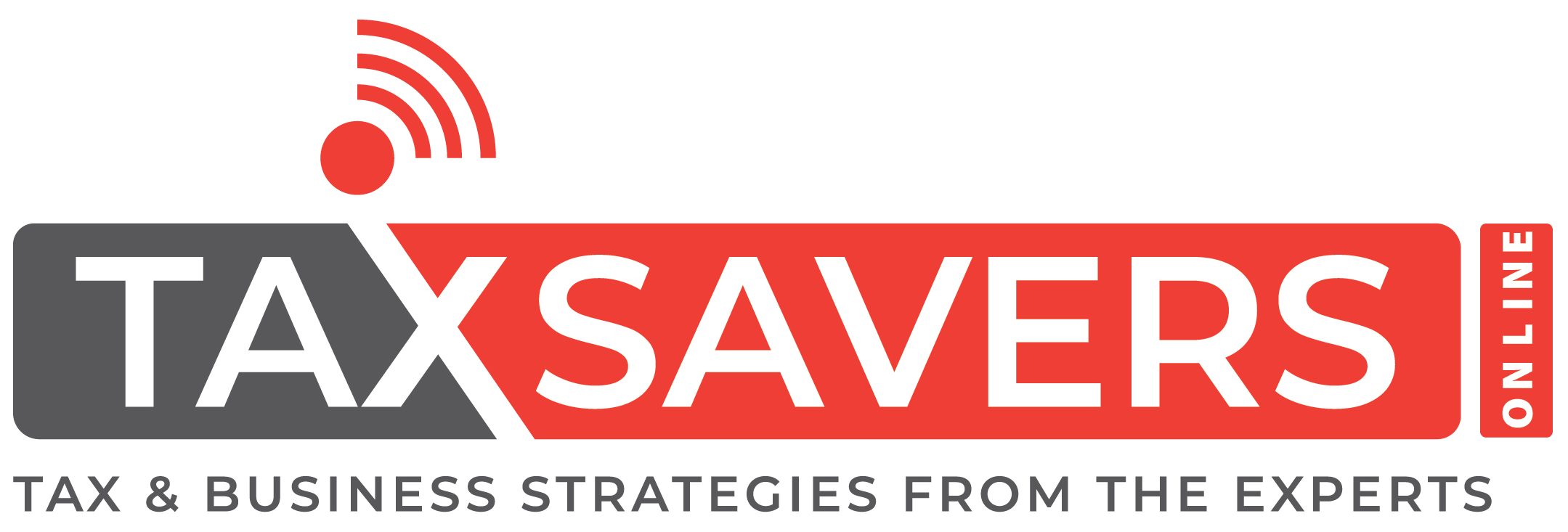Owning a home is costly. Along with mortgage and utility bills, homeowners pay over $13,000 a year on average for extra expenses like maintenance, property taxes, and insurance. Fortunately, there are many tax benefits of homeownership to help offset those costs. Homeowner tax credits and tax deductions can potentially save you thousands on your tax return. Are you ready to save money? Keep reading for a comprehensive guide on “What Are the Best Tax Benefits of Homeownership.

Contents
Choosing the Best Tax Deductions for Homeowners
Maximizing the tax benefits of owning a home is relatively straightforward. The highest tax savings for homeowners start by determining:
- Which filing status to choose
- Whether the standard or itemized deduction is higher
The best filing status and deduction type will save you the most money. You can file your tax return with confidence knowing you didn’t miss a cent in homeowner savings.
Filing Status
Filing status affects your deductions, credits, and exemptions. It’s important to have an accurate filing status before filling out your tax return.
The IRS has five filing statuses to choose from:
- Single
- Head of household
- Married, filing jointly
- Married, filing separately
- Qualifying widow or widower
You may only have one status to choose from, or you may be able to claim a certain status if it benefits you more than another one. The IRS has an online tool to help you figure out which status(es) you qualify under.
1. Single
The single filing status applies to anyone who isn’t married, including divorcees. Legal separations or separate maintenance decrees also count as single status if applicable under state law.
2. Head of Household
The head of household filing status also applies to unmarried taxpayers. To claim this status, however, the IRS requires you to pay more than 50% of total household costs for yourself and your dependent(s). Dependents must also live in your home for at least six months.
3. Married, Filing Jointly
The married, filing jointly status is for couples who want to file a joint tax return. This status can be beneficial if there’s a large income gap between you and your spouse. It can also qualify you for additional tax perks like Earned Income Credit (EIC).
4. Married, Filing Separately
The married, filing separately status is for couples who want to file separate returns. If one spouse has a significant amount of itemized deductions or debts, this status may be more beneficial than joint filing.
The IRS wants couples to file together, however, so this status is usually (but not always) the higher tax option.
5. Qualifying Widow or Widower Status
Qualifying widow or widower status is for taxpayers who did not remarry after their spouse passed away. This status has several provisions to meet:
- Only applies for up two years after their spouse’s death
- Only applies if the taxpayer has a dependent child
- The taxpayer must live with this child all year
- The taxpayer must pay more than 50% of household costs
This status offers the same benefits as married, filing jointly. After the two years have passed, you must choose from single or head of household instead.

Tax Deduction Types
Your filing status determines which type of tax deduction benefits you most. Tax deductions allow you to subtract certain amounts from your Adjusted Gross Income (AGI). Your AGI is your taxable income.
Lowering your taxable income reduces the taxes you owe, or increases the tax refund you receive. You can choose from standard or itemized deductions.
You can generally choose whichever deduction you want to claim. However, couples who use “married, filing separately” as their status cannot claim a standard deduction if the other spouse chooses itemized deductions.
1. Standard Deductions
A standard deduction is a flat reduction of your taxable income. The deduction amount depends on your filing status.
Taxpayers who are over age 65 or legally blind qualify for a higher standard deduction. They also qualify if they have a spouse who meets either of those conditions.
This deduction amount changes frequently as inflation and the costs of living go up. For example, the standard deduction in 2017 was only $6,350 for single and $12,700 for joint. By 2021 it had doubled to $12,550 for single and $25,100 for joint.
2. Itemized Deductions
Itemized deductions are variable taxable income reductions you can claim if they apply to you. Major itemized deductions include:
- Medical and dental expenses
- State and local taxes (SALT)
- Home mortgage interest
- Charity donations
- Cash or check gifts
- Casualty and theft losses
Itemized deductions also have provisions on how much you can claim. For example, you could only deduct medical and dental expenses that were above 7.5% of your AGI in 2021.
3. Above-the-Line Deductions
You can claim certain deductions that reduce your gross income. These deductions aren’t scaled from your AGI like itemized deductions, so they’re known as “above the line.”
Common above-the-line deductions include:
- Student loan interest
- Educator expenses
- Certain self-employment expenses (insurance premiums, taxes)
- Alimony payments
- Military moving costs
- Qualified retirement plan payments
Above-the-line deductions have the added perk of increasing your itemized deductions benefits where applicable. Your threshold for medical expenses would be decreased, for example, allowing you to qualify for or claim more in medical deductions.
Tax Bracket
Your tax bracket also affects your tax savings. Although you don’t get to choose your tax bracket, it’s important to understand how it affects your taxes.
Tax brackets are scaled progressive tax system. Unlike a regressive tax which disproportionately affects lower incomes, progressive taxes increase proportionally to certain income thresholds.
For example, any single taxpayer who makes less than $10,275 will be taxed at a 10% tax rate in 2022. A single taxpayer who makes $539,901 or more will be taxed at 37%.
Your tax bracket and tax rate determine how much you pay in taxes, and how much you save for itemized deductions. It also determines your eligibility for certain tax credits and exclusions, which may have upper-income limits.
Tax Benefits of Homeownership
There are two main tax benefits of owning a home: tax credits and tax deductions. Certain tax exclusions can also apply.
Homeowner Tax Credits
Tax credits reduce your taxes directly. For example, if you owe $2,000 in taxes and you have a tax credit of $1,500, the credit reduces your taxes owed to only $500.
Some tax credits are non-refundable. If you owe less in taxes than your credit amount, only a refundable tax credit will be added to your tax refund.
1. Mortgage Credit Certificate
Mortgage Credit Certificate programs (MCCs) let mortgage borrowers recoup part of their mortgage interest payments as a tax credit. This provides a financial boost for low-income or first-time homebuyers.
MCCs are managed by your state’s Housing Finance Agency (HFA). Qualifications differ by state. The max credit is $2,000 for qualified home buyers.
2. Energy Credits
The federal government provides incentives for homeowners to install renewable energy systems and energy-efficient improvements. A percentage of installation costs can be recouped as various federal tax credits.
Qualifying systems and improvements include:
- Solar panels and systems
- Geothermal heat pumps
- Residential wind turbines
- Fuel cells
- Biomass stoves
- Insulation
- Energy-efficient windows and doors
- Energy-efficient HVAC systems
- Metal and asphalt roofs
- Natural gas, propane, or oil water heaters
The percentage varies by year of installation. Some improvements have a max credit cap, like fuel cells ($500) and hot water heaters ($150).
Homeowner Tax Deductions
Tax deductions reduce your taxes indirectly by lowering your taxable income. Your tax bracket determines the amount of tax savings, along with your filing status. There are several tools to help you figure out your income tax.
The standard deduction generally tends to be higher for simple tax returns. For many homeowners, however, itemized deductions can exceed the standard deduction.
1. Mortgage Interest
You can subtract mortgage interest payments as a tax deduction. The maximum amount of mortgage that qualifies depends on the year you bought your house:
- Before October 13, 1987: All interest is fully deductible
- Before December 16, 2017: $1 million
- After December 16, 2017: $750,000
Couples that choose married, filing separately can deduct $375,000 each.
2. Private Mortgage Insurance
The PMI deduction has been up in the air since the Tax Cuts and Jobs Act of 2017. It also scales off AGI. If your AGI exceeds $100,000, you see a 10% reduction for every $1,000 over until it’s reduced to 0% at $109,000.
If you can take advantage of this deduction, however, it also applies to certain VA, FHA, or USDA fees.
3. Loan Origination Fees / Discount Points
Loan origination fees and discount points can qualify for tax deductions. Loan origination fees are the miscellaneous fees lenders charge for creating your loan. Discount points essentially function as prepaid interest to reduce your loan’s interest rate.
The IRS allows origination fees to count as mortgage points when determining your deduction. You can choose this deduction even if your lender or seller pays your points.
There are many provisions to meet before claiming this deduction, however. These include:
- Your primary residence secured the loan
- The loan is used to buy or build your primary residence
- Points payments are a usual business practice in the loan origination area
- The points paid weren’t higher than usual
- The points weren’t for separate expenses like title fees and property taxes
- The points are a percentage of the mortgage’s principal amounts
Additionally, if you can’t deduct all of your mortgage interest, you won’t be able to deduct all of your points, either.
4. Home Equity Loans
The interest on home equity loans and home equity lines of credit (HELOC) may also be deductible. There are two main provisions for this deduction:
- Funds must be used to “buy, build, or substantially improve” your home
- The home must also be the same property that secured the home equity loan or HELOC
This deduction also only applies to your primary residence and second home. Additionally, your home cost has to be higher than your loan to qualify.
5. Property Taxes
The property tax deduction is relatively straightforward. You can deduct up to $10,000 for qualifying property and real estate taxes. Couples that choose married, filing separately can deduct $5,000 each.
If you claim a property tax deduction, however, the total deduction for state income taxes, sales taxes, and property taxes cannot go above $10,000 either. You may have to calculate which deduction(s) saves you the most.
6. State Income Taxes and State Sales Taxes
Any non-federal (local, state, or foreign) income taxes can qualify for a deductible. If you claim income taxes, however, you cannot deduct any state or local sales taxes concurrently. You also have to be mindful of the $10,000 combo cap.
7. Home-based Business
If you work from home, you may be able to claim certain home costs as a deduction. These costs include:
- Insurance
- Security systems
- Utilities
- Business-related repairs
- HOA fees
- Business-related car use
- Business supplies
To qualify for this deduction, the IRS stipulates you pass the “exclusive use test.” This means:
- A clearly separate space in your home is used to conduct business
- That space is only ever used for relevant business purposes during 100% of the tax year
If you have a spare bedroom, for example, that space cannot function as a home office and an extra bedroom when friends or family visit. Once they inflate an air mattress in your home office, you fail the exclusive use test.
You may also be disqualified if this workspace isn’t your primary place of work, i.e. you spend more work time in your company’s office than your home office.
8. Medical Home Improvements
Along with medical expenses, you can deduct improvements to your home that are medically necessary for you, your spouse, or any dependents living in your home.
Qualifying improvements include:
- Entrance and exit ramps
- Bathroom railings or support bars
- Porch and stairlifts
- Wider doorways and hallways
- Lowering difficult to reach utilities (like kitchen cabinets)
- Electrical outlet adjustments
- Modifying warning systems (like smoke detectors)
If these improvements boost your property value, you can only claim the installation cost minus the property value increase. If there’s no increase in property value, you can claim the entire improvement as a deduction.
9. Home Selling Expenses
You can deduct certain house selling expenses from your capital gains so it’s potentially taxed at a lower rate. These include:
- Sales commissions
- Advertising fees
- Legal fees
- Mortgage points
- Misc. fees related to selling (title search fees, document fees)
You can’t include physical costs related to selling a home, like weeding or painting. But you can include any additions, upgrades, and installations that increased your home value. Examples include:
- Adding a garage
- Upgrading the HVAC system
- Installing a new roof
- Replacing floors
Regular maintenance and repairs don’t count as home improvements. If the cost to repair a feature is around the same as a replacement or an upgrade, you may save more money in the long run by opting for the replacement.
Homeowner Tax Exclusions
Tax exclusions are the middle ground between a tax credit and tax deduction. Tax exclusions reduce your taxable income, but in a set amount not limited by your tax bracket.
1. Capital Gains Exclusions
If you sold your primary residence, you may qualify for a capital gains exclusion. The maximum exclusion is $250,000, or $500,000 for joint filers.
To qualify, you must pass the ownership test (own for 2 years or more) and the use test (live in for 2 years or more) during a five-year period. The only exception is for members of the Armed Forces.
Misc. Homeowner Benefits
There are homeowning and home-buying tax benefits exclusive to certain demographics. These include first-time homeowners, seniors, and active military/veterans.
First-Time Homeowner Benefits
The federal government and many states offer incentives to encourage owning a home. Many of these initiatives target lower-income families who would otherwise be shut out from home buying opportunities.
1. IRA Payouts
The IRS allows qualified first-time homebuyers to withdraw a certain amount from their Individual Retirement Accounts without the usual penalties. Additionally, both spouses are allowed to draw the max from their accounts.
If you have a traditional IRA, you can withdraw up to $10,000 without paying the 10% penalty. This withdrawal is only once a lifetime, however. Even if you open another IRA, you cannot make another penalty-free first-time homebuyer withdrawal again.
If you have a Roth IRA, the rules are a little more complicated. Your contributions are effectively taxed as they go in. Once your account is at least five years old, you can withdraw any contribution amount without a tax or penalty.
First-time homebuyers can also withdraw up to $10,000 in earnings without paying 10% in penalties. If your account is less than 5 years old, however, you still have to pay the tax.
2. Grants
There are many different first-time home-buying grants available through state and non-profit programs. These grants typically offer assistance with down payments and other potentially prohibitive homebuyer fees.
As a bonus, the IRS generally doesn’t count these grants as taxable income. The only exception is seller-funded programs.
3. Rebates
Some lenders and real estate against offer rebates to make a house buying deal more lucrative, especially for first-time or lower-income homebuyers. If you receive a buyer’s rebate, the IRS doesn’t consider it taxable income.
Senior Citizen Benefits
Tax filers who are 65 years or older can already claim a higher standard deduction, spending on filing status. For 2022, the increase is an additional $1,400 for married, and $1,750 for single or head of household.
Along with a higher standard deduction, there are many other tax deductions, credits, and exemptions available to qualified seniors who own their homes.
1. Tax Exemptions
Seniors generally rely on fixed incomes. This can create strain on senior homeownership if property taxes increase, but their income cannot increase with it. Many states, counties, and local programs use tax exemptions to help ease homeowner taxes on seniors.
For example, Texas requires an additional school district Homestead Exemption for anyone age +65 or disabled. This exemption is up to $10,000 and no less $3,000.
In Boulder County, Colorado, qualifying seniors can exempt up to 50% of their first $200,000 in property value. The state then pays for the exempted amount.
2. Tax Deferrals
Many states also offer property tax deferral programs. Qualifying seniors can defer their property tax payments to their estate or a later provisional date.
In California, the property tax postponement program lets homeowners who are 62 or older, blind, or disabled defer their property taxes until:
- The qualifying person moves to a new residence.
- The property is sold.
- The qualifying person has passed away.
- The property title is transferred to someone unqualified for the program.
To qualify for the program, the income limit is $45,810 or less. Other eligibility requirements include tax delinquency and default status.
Active-Duty Military and Veteran Benefits
Homeownership can be especially difficult for servicemembers. In addition to moving frequently, veterans are vulnerable to financial difficulties and homelessness. Veterans currently make up 11% of the homeless population.
The VA home loan program is specifically to help service members and veterans buy a home residence. There are also many tax benefits to help ease the burden of PCS home moves and promote stable housing for veterans.
1. Property Tax Exemptions
Disabled veterans can claim property tax exemptions, depending on their state’s eligibility criteria. For example, Texas offers a scaled property tax exemption for veterans. A 10%-29% disability rating can claim a $5,000 exemption, while a 100% disability rating qualifies for a full exemption.
In California, all eligible veterans currently receive a maximum $4,000 exemption. An additional exemption is also available for 100% disabled or low-income veterans, with income and exemptions compounded for inflation.
2. Capital Gains Exclusion Eligibility
The eligibility requirements for the capital gains exemption can be tricky. During five years from the date of sale, you must:
- Own the home for a minimum of 2 years (ownership test)
- Live in the home as your primary residence for a minimum of 2 years (use test)
Members of the Armed Forces can suspend the 5-year test period, however, if they’re required to be on official extended duty away from their home.
3. Moving Expenses
Tax deductions for moving expenses were largely eliminated under the TCJA. Only servicemembers can currently claim this deduction.
Active-duty servicemembers on official PCS orders can claim expenses directly related to the move, but only if they aren’t paid or reimbursed by DFAS. These expenses include:
- Shipping and hauling
- Storage
- Insurance
- Lodging
- Gas
PCS moves are costly to servicemembers, so make sure to keep all your receipts and claim every expense you can.
Getting the Most Tax Benefits For Your Tax Return
Owning a home can come with many extra costs. But it also comes with many extra tax benefits. The tax benefits of homeownership include tax credits, itemized deductions, and tax exemptions.
You can save even more money on your tax return with additional credits and deductions. For more tax-savvy tips, visit our tax section.
Learn More
A Complete Guide to Freelancer Tax Deductions for 2022
Will Real Estate Prices Drop in 2022?
Tax Advantages of Rental Property






3 thoughts on “What Are the Best Tax Benefits of Homeownership?”